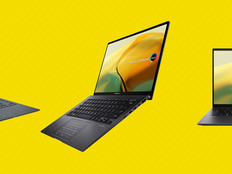Eco-Friendly Printing
Green is the new black — and it’s little wonder why. Paperless billing, energy-efficient LCD monitors and even teleworking have changed the way businesses operate for the better. And while one benefit is ecological, the money you’ll save by going green is too pretty to ignore.
If your company is looking for ways to save money and minimize its carbon footprint, consider the following seven tips.

1 Just Say No.
It’s no secret that users will be less likely to engage in wasteful practices (such as printing every single e-mail), non-business-related practices (such as printing joke e-mails) or practices that invite unwanted liability to your organization (such as both of the above) if it becomes inconvenient for them to do so. Couple this with the high cost of consumables, and you have a strong argument against giving most office employees a desktop printer.
2 Network.
Mandating the use of networked laser printers (with few exceptions) will not only help save the environment (paper, ink, chemicals, plastics), but can also save your company big bucks.

3 Multitask.
To save even more energy, consolidate standalone devices (such as those remaining few desktop printers, fax machines, scanners and copiers) to multifunction printers or copiers. Management of these systems is usually relatively simple and typically can be performed by a network administrator using a web browser. This will also reduce the number of devices that eventually end up in a landfill.

4 Double Your Pleasure.
Now that you’ve networked your printers and copiers, mandate double-sided printing, which Hewlett-Packard estimates can cut paper waste by 25 percent.

5 Take a Walk.
Many printer manufacturers offer a feature that requires employees to walk to a printer and punch in a security code before the job prints. This feature is critical for finance and legal departments, which produce confidential documents. But it also provides a green benefit by reducing the number of pages that are actually printed, says Dick Sullivan, enterprise marketing manager at storage manufacturer EMC. By pursuing green IT internally, EMC discovered that many print jobs were stored on printers but never actually printed. The walk-to feature eliminates waste in two ways, Sullivan says: It makes employees think twice about whether they need to print, and if they print, whether they want to walk to pick it up.

6 Start a High-Fiber Diet.
The average office worker uses 10,000 sheets of paper per year, according to the Federal Network for Sustainability. “Printing on recycled paper, reusing it and recycling it is a good place to start,” says Doug Washburn, infrastructure and operations analyst at Forrester Research. A ton of paper made from recycled fibers instead of virgin wood conserves 17 to 31 trees, 7,000 gallons of water and 4,000 kilowatt-hours of electricity. “The federal government is now required to purchase paper with 30 percent [post-consumer recycled] fibers,” Washburn says.

7 Send It Back.
Major printer manufacturers have launched aggressive return and recycle programs for consumables. For example, Lexmark converts its recycled cartridges into a wood-like product called eLumber, through a partnership with recycler Close the Loop. And HP uses post-consumer recycled plastics in the production of new ink-jet cartridges.
Jason Holbert is a Tier II desktop support technician at Harcros Chemicals, a chemical distributor in Kansas City, Kan.
Additional reporting by Julie Sartain.






